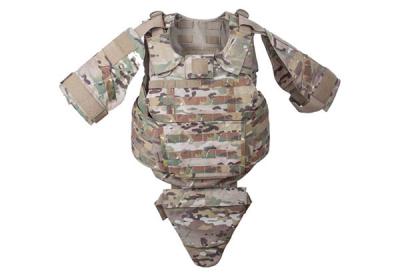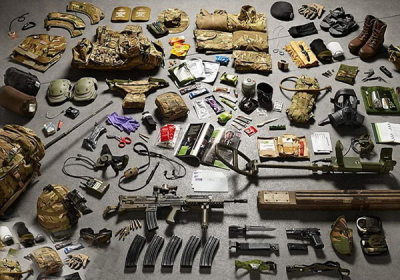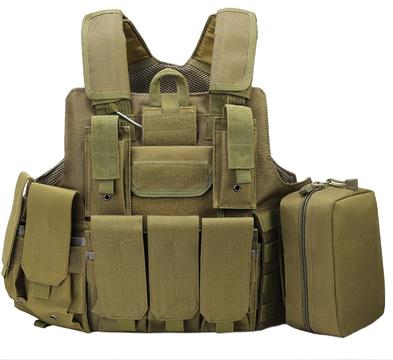
A riot control shields is a polycarbonate (reinforced plastic) or metal shield used to protect against attacks from knives, thrown objects, kicks, punches, and other physical assaults. Police, security personnel, and correctional officers use riot control shields to protect the safety of the public and law enforcement personnel during riots or violent protests. Although shields have existed for thousands of years, transparent protective shields became necessary and popular after the violent protest activities in Europe in the 1950s, 1960s, and 1970s. They enable operators to view in all directions through the protective shields without causing visual barriers, making the ability to scan potential threats and circumvent potential dangers essential in unstable situations.
There are different types of riot control shields design available on the market, each with its unique advantages and limitations. Therefore, appropriate protective shields should be selected by individual departments or agencies for the specific threats they need to defend against. In any case, officers must always maintain control over the shield.
Riot control shields can protect users from various blunt and missile injuries. In riot or melee situations, rioters will use anything nearby as a weapon. The thickness of riot control shields varies from 2 to 8 millimeters, most made of polycarbonate from four to six millimeters thick. These protective shields help protect an area, control tense situations, and help law enforcement agencies push back individuals when necessary. Considering the dynamic nature of these events, protective shields can protect users from many throwing threats, including chairs, rocks, bricks, batons, baseball bats, and pry bars. In addition, they can also prevent punching, kicking, and spitting.
Depending on the riot control shields manufacturer, the shield may contain various other protections. Some are flame-resistant and can protect them from high temperature and heat. Others have inherent protection against chemical and biological substances such as blood, urine, and feces. Cleaning and disinfecting protective shields to prevent contamination and infectious diseases should adhere to standard operating procedures and manufacturer cleaning recommendations.
Like anything else, riot control shields will be damaged and destroyed due to excessive or repeated impacts. The edges of the protective shield are also vulnerable to damage caused by drops. Riot control shields are not bulletproof or bullet-resistant. In such applications, bulletproof shields are necessary. Most riot control shields are also ineffective in blocking arrows.
 What Are the Considerations when Buying Combat Boots?July 26, 2022Leather is often used as the body of combat boots. All leather combat boots are known for their durability, especially genuine ones, since they can withstand the harshest environments. The full-grain ...view
What Are the Considerations when Buying Combat Boots?July 26, 2022Leather is often used as the body of combat boots. All leather combat boots are known for their durability, especially genuine ones, since they can withstand the harshest environments. The full-grain ...view Do You Know Police Bulletproof Vest?September 9, 2021At present, the commonly used police protective equipment equipped by public security departments around the world include these types: riot shields, stab-resistant clothing, riot helmets, bullet-proo...view
Do You Know Police Bulletproof Vest?September 9, 2021At present, the commonly used police protective equipment equipped by public security departments around the world include these types: riot shields, stab-resistant clothing, riot helmets, bullet-proo...view Does the Integration Of Body Armor & Tactical Vest Means ModularizationJune 30, 2021It seems that there is an increasing tendency to combine body armor and carrying gear into one since 21st century. Body armor and tactical vest are very important for individual equipment.view
Does the Integration Of Body Armor & Tactical Vest Means ModularizationJune 30, 2021It seems that there is an increasing tendency to combine body armor and carrying gear into one since 21st century. Body armor and tactical vest are very important for individual equipment.view Precautions for Wearing Bulletproof VestsMay 12, 2022Bulletproof vests can ensure the safety of wearers even in vehicle accidents. Every year, many international police are rescued by bulletproof vests. Many survived the impact from the steering column ...view
Precautions for Wearing Bulletproof VestsMay 12, 2022Bulletproof vests can ensure the safety of wearers even in vehicle accidents. Every year, many international police are rescued by bulletproof vests. Many survived the impact from the steering column ...view What Are the Benefits of Choosing a Baton Cop?July 5, 2022There's a reason police carry baton cops with them. The baton cop is a very effective weapon when protecting yourself in hand-to-hand combat. With just a little force, anyone, even untrained, can ...view
What Are the Benefits of Choosing a Baton Cop?July 5, 2022There's a reason police carry baton cops with them. The baton cop is a very effective weapon when protecting yourself in hand-to-hand combat. With just a little force, anyone, even untrained, can ...view Primary Functions and Protection Levels of the Bulletproof JacketApril 10, 2023The main function of bulletproof jacketA bulletproof jacket is a protective clothing that can absorb the kinetic energy produced by bullets or fragments of explosives to prevent damage to the human bo...view
Primary Functions and Protection Levels of the Bulletproof JacketApril 10, 2023The main function of bulletproof jacketA bulletproof jacket is a protective clothing that can absorb the kinetic energy produced by bullets or fragments of explosives to prevent damage to the human bo...view